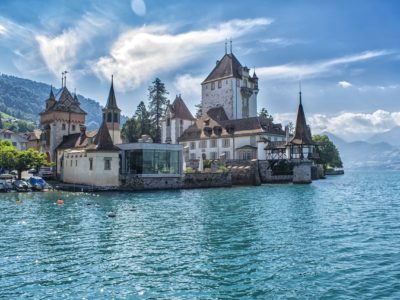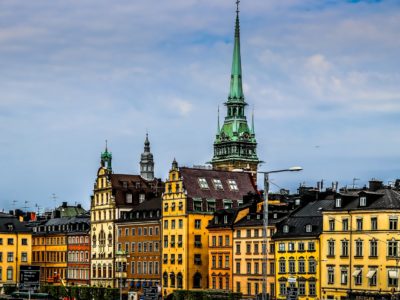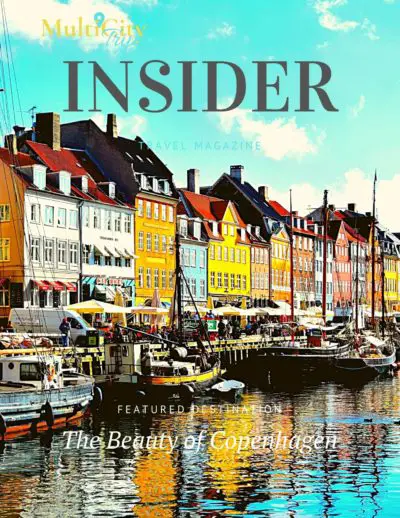Portugal
Portugal is a southern European country on the Iberian Peninsula, bordering Spain. Its location on the Atlantic Ocean has influenced many aspects of its culture: salt cod and grilled sardines are national dishes, the Algarve's beaches are a major destination and much of the nation’s architecture dates to the 1500s–1800s when Portugal had a powerful maritime empire. In the mid-Atlantic, Portugal's volcanic Azores islands are popular for trekking and whale-watching. The island of Madeira is known for a mild winter climate, its namesake fortified wine, and trails along mountain aqueducts. On the mainland, capital Lisbon has São Jorge Castle atop the medieval Alfama district, with views of the Tagus estuary. To the south are the whitewashed villages and wild beaches of the Alentejo. In the north, Porto has cobbled streets and port wine cellars by the river. Inland from there are villages of the Minho and steep, terraced vineyards of the Douro.
Source: https://www.google.com/travel/guide
| Capital | Lisbon |
|---|---|
| Visa & Passport | U.S. citizens may enter Portugal for up to 90 days for tourist or business purposes without a visa. Your passport should be valid for at least six months. |
| Currency | Euro (EUR) |
| Language | Portuguese |
| Tipping | 5% – 10% in restaurants is standard, although tipping should only be provided on the provision that you are extremely happy with the service. No tip is expected for coffee/espressos or a beverage, although some people might leave the change/ round up to the closest euro. |
| When to visit | Peak travel is spring and summer (Apr–Aug), when the weather is warm almost everywhere. Midsummer (Jul–Aug) is hot and dry. Lively Jun festivities are a feature of several places, and are often centred on the feast day of the local patron saint. They include Santo António (Lisbon), São João (Porto) and the Sanjoaninas (Azores). Coimbra's Festival das Artes (Jul) is a arts festival staged primarily outdoors. Winters (Dec–Feb) are largely mild and rainy, getting colder in the interior. |
Map
Top 5 Best Cities to Visit
Lisbon is Portugal’s hilly, coastal capital city. From imposing São Jorge Castle, the view encompasses the old city’s pastel-colored buildings, Tagus Estuary, and Ponte 25 de Abril suspension bridge. Nearby, the National Azulejo Museum displays 5 centuries of decorative ceramic tiles. Just outside Lisbon is a string of Atlantic beaches, from Cascais to Estoril. The city’s compact, the cobblestoned heart is easily explored on foot or via its old-fashioned trams and funiculars. The Moorish Alfama district has narrow, winding streets and taverns with fado singers. Chiado and its cafes, shopping, and seafood restaurants adjoin Bairro Alto, known for its nightlife. The Calouste Gulbenkian Museum complex, set amid serene gardens, displays noted art collections. On the waterfront are the ornate 16th-century Jerónimos Monastery and Belém Tower, and, to the east, the ultramodern Parque das Nações district and its massive Oceanário aquarium.
Porto is a coastal city in northwest Portugal known for its stately bridges and port wine production. In the medieval Ribeira (riverside) district, narrow cobbled streets wind past merchants’ houses and cafes. São Francisco Church is known for its lavish baroque interior with ornate gilded carvings. The palatial 19th-century Palácio de Bolsa, formerly a stock market, was built to impress potential European investors. Clérigos Tower is the iconic baroque bell tower of Clérigos Church. An old tram follows the river to beachside bars in affluent Foz. Up the coast is fishing port Matosinhos, where seafood restaurants offer grilled sardines on the street. The 1886 Dom Luís iron bridge has a walkway that crosses the Douro River to the port wine lodges of Vila Nova de Gaia. São Bento train station's immense azulejo tile panels depict battles and rural life in Portugal. The famous Lello & Irmão bookstore has ornate art nouveau features, and the Serralves Museum traces the history of contemporary art.
Sintra is a resort town in the foothills of Portugal’s Sintra Mountains, near the capital, Lisbon. A longtime royal sanctuary, its forested terrain is studded with pastel-colored villas and palaces. The Moorish- and Manueline-style Sintra National Palace is distinguished by dramatic twin chimneys and elaborate tilework. The hilltop 19th-century Pena National Palace is known for a whimsical design and sweeping views. Also perched above the city is the Moorish fortress Castelo dos Mouros, whose winding battlements and towers were originally built in the Middle Ages. Near the town center, the Quinta da Regaleira is an early-20th-century manor whose turrets overlook lush parkland sheltering grottoes and moss-covered tunnels. Just outside town, 30 hectares of atmospheric gardens surround the Moorish-style Monserrate Palace. The nearby monastery of Convento dos Capuchos, nicknamed the “Cork Convent” for its cork-lined walls, was immortalized in a poem by the English writer Lord Byron.
Madeira, an autonomous region of Portugal, is an archipelago comprising 4 islands off the northwest coast of Africa. It is known for its namesake wine and warm, subtropical climate. The main island of Madeira is volcanic, green, and rugged, with high cliffs, pebbly beaches, and settlements on deltas of the Fajã River. Capital Funchal has botanic gardens and is known for its harbor and a large New Year's fireworks show. Dotted around the island of Madeira are vineyards and wineries producing sweet, fortified Madeira wine. Popular outdoor pursuits include hiking along old Levada (aqueducts) in the mountains, golf, and surfing as well as scuba diving at sites such as the Garajau Marine Nature Reserve. The small island of Porto Santo has a semi-arid climate and a long sandy beach at Vila Baleira. To the southeast are Desertas and Selvagens islands, uninhabited and wild.
Cascais is a coastal resort town in Portugal, just west of Lisbon. It’s known for its sandy beaches and busy marina. The old town is home to the medieval Nossa Senhora da Luz Fort and the Citadel Palace, a former royal retreat. Nearby is the whitewashed Nossa Senhora da Assunção church, with glazed azulejo tiles. Paula Rego House of Stories shows the Portuguese artist’s paintings in a modern building. King D. Carlos Sea Museum has a variety of seafaring artifacts. A striking mansion nearby houses the Castro Guimarães Museum, with lavish decorative arts. Santa Marta Lighthouse Museum explains the building’s past and has displays of optics. Boca do Inferno is an arched rock formation through which waves crash noisily. A promenade leads northeast from Cascais to the neighboring resort of Estoril, home to the Casino Estoril. To the northwest is broad Guincho Beach, with brisk breezes and strong surf. North of Cascais is the diverse landscapes of Sintra-Cascais Natural Park and the extravagant hilltop palaces of Sintra.
Source: wikipedia
Top 5 Places to Visit
The Rua Augusta Arch is a stone, triumphal arch-like, historical building and visitor attraction in Lisbon, Portugal, on the Praça do Comércio. It was built to commemorate the city's reconstruction after the 1755 earthquake. It has six columns and is adorned with statues of various historical figures. Significant height from the arch crown to the cornice imparts an appearance of heaviness to the structure. The associated space is filled with the coat of arms of Portugal. The allegorical group at the top, made by French sculptor Célestin Anatole Calmels, represents Glory rewarding Valor and Genius. Originally designed as a bell tower, the building was ultimately transformed into an elaborate arch after more than a century.
The Pena Palace is a Romanticist castle in São Pedro de Penaferrim, in the municipality of Sintra, on the Portuguese Riviera. The castle stands on the top of a hill in the Sintra Mountains above the town of Sintra, and on a clear day, it can be easily seen from Lisbon and much of its metropolitan area. It is a national monument and constitutes one of the major expressions of 19th-century Romanticism in the world. The palace is a UNESCO World Heritage Site and one of the Seven Wonders of Portugal. It is also used for state occasions by the President of the Portuguese Republic and other government officials.
Belém Tower, officially the Tower of Saint Vincent is a 16th-century fortification located in Lisbon that served as a point of embarkation and disembarkation for Portuguese explorers and as a ceremonial gateway to Lisbon. It was built during the height of the Portuguese Renaissance and is a prominent example of the Portuguese Manueline style, but it also incorporates hints of other architectural styles. The structure was built from lioz limestone and is composed of a bastion and a 30-meter, four-story tower. Since 1983, the tower has been a UNESCO World Heritage Site, along with the Jerónimos Monastery. It is often portrayed as a symbol of Europe's Age of Discoveries and as a metonym for Portugal or Lisbon, given its landmark status. It has incorrectly been stated that the tower was built in the middle of the Tagus and now sits near the shore because the river was redirected after the 1755 Lisbon earthquake. In fact, the tower was built on a small island in the Tagus River near the Lisbon shore.
São Jorge Castle is a historic castle in the Portuguese capital of Lisbon, located in the freguesia of Santa Maria Maior. Human occupation of the castle hill dates to at least the 8th century BC while the first fortifications built date from the 1st century BC. The hill on which São Jorge Castle stands has played an important part in the history of Lisbon, having served as the location of fortifications occupied successively by Phoenicians, Carthaginians, Romans, and Moors, before its conquest by the Portuguese in the 1147 Siege of Lisbon. Since the 12th century, the castle has variously served as a royal palace, a military barracks, home of the Torre do Tombo National Archive, and now as a national monument and museum
Ponta da Piedade is a headland with a group of rock formations along the coastline of the town of Lagos, in the Portuguese region of the Algarve. Consisting of yellow-golden cliff-like rocks up to 20 meters high, they are one of the most famous touristic attractions of Portugal. Several grottos in Ponta da Piedade can be visited by boat. The location also contains a lighthouse, dating back to 1913.
Source: https://www.google.com/travel/guide
Useful Travel Guide & Money Saving Tips
Eat at local restaurants - If you truly want to experience the very best of Portuguese hospitality and cuisine, have a lookout for the ‘Menu do Dia’ (Menu of the Day) which is often advertised at many local restaurants. These restaurants will offer a different menu option every day and it often includes a soup, main meal, juice, and an espresso coffee for under 10 euros.
Visit Santa Justa lift for free - There are constant and long queues to use the lift since it’s one of the top attractions in Lisbon. To get to the top for the best view, you might think you will have to pay to get access to the lift. However, there is actually a free entrance round the back. This means you could still get to the top and enjoy the views without being stung by the price or queues of tourists.
Free walking tours – Similar to other top tourist destinations, you might find a free walking tour in different destinations across Portugal as well. The tour typically takes around 2 hours and is packed with information. While it is free, it is expected for you to leave a tip to your guide, though it’s completely up to you how much you want to spend, and generally varies from person to person depending on how much they enjoyed the tour.
Alcohol is cheap – Lisbon is famous for its bar hopping! The nightlife is renowned and you'll find that lots of people visiting Lisbon are ready to visit as many bars as possible in one night. If you don’t feel like spending too much money on alcohol or would prefer not to be in a crowded bar, consider staying on your hotel balcony/ outdoor seating area then head to the local shops and newsagents instead. These places sell bottles of Superboc for as low as one euro. You can also get some beers or Ginjinha (cherry liquor), which is a local delicacy, at nearby stalls for about a euro or so.
Visiting Pena Palace in Sintra - If you are in Lisbon, then a day trip to Pena Palace in Sintra is a must. The best and cheapest way to get there is by train from Rossio Station. The 40-minute train journey costs just 4.50 euros and takes you to Sintra station. From here, the easiest way to get to the palace is by the 434 bus. Once you get up to the palace grounds, get a ticket at the box office for park access. If you'd like to visit the inside of the palace, there's an option for this too.

6 Nights/ 7 Days Signature Escape to Lisbon and Barcelona
Lisbon (Portugal) - Barcelona (Spain)flight
emoji_transportation
hotel
free_breakfast
local_dining
directions_boat
local_activity
local_see
local_police

6 Nights/7 Days Escape to Lisbon and Barcelona by Air
Lisbon (Portugal) - Barcelona (Spain)flight hotel emoji_transportation + local_police

8 Nights/9 Days Escape to Lisbon and Porto by Train
Lisbon - Porto (Portugal)flight hotel emoji_transportation + local_police

8 Nights/9 Days Signature Escape to Lisbon, Sintra, Cascais and Porto
Lisbon - Sintra - Cascais - Porto ( Portugal)flight directions_car hotel free_breakfast directions_railway local_activity local_see local_police
Unfortunately no accommodations were found.
Portugal Vacations & Travel Guide
With our Portugal vacations travel guide, you can learn more about this beautiful destination from country information, map, best cities to visit, when and the best time to visit, top highlights, travel guide & money-saving tips and so much more.
Ensure to check out our “Package Deals” tab to review all related Portugal vacations with airfare currently available for you to choose from for your next vacation to Portugal. When selecting one of our customizable pre-designed packages either from this tab or from our marketplace, you will be able to fully customize your Portugal trip with the help of our travel specialist/destination experts.
What happens next?
Once you select a pre-designed package and submit a questionnaire, your dedicated travel expert will work with you to personalize your dream trip exactly how you want. Your package deal includes all travel components and comes with a 100% tailor-made itinerary based on your selection of the pre-designed package.
To learn more about how the process of trip planning using a pre-designed package works in detail, please see our “How It Works” page or review our video on “How to Plan a Multi-City Trip to Europe in 5 Easy Steps” here.
Don’t find what you are looking for in our “Package Deals” tab or in our pre-designed package marketplace? Let our in-house experienced travel experts craft your European journey from scratch with our custom planning option.
If you are one of our Insider Club members, select the “Insider Deals” tab available on this page to access additional pre-designed packages available only with your membership. These exclusive journeys are typically available to members only and may cover journeys beyond Europe. To learn more about your Insider Club membership, please visit the “Insider Club” membership page.
Have questions for us? Schedule a FREE Call with us here or contact one of the travel experts/destination specialists at [email protected], call/text us at (888)223-2316 today.



































































